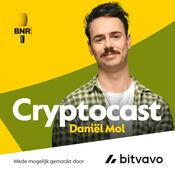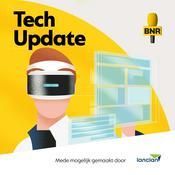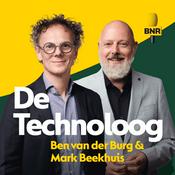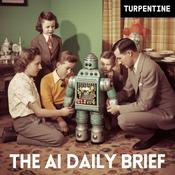340 afleveringen

338: GrantiX’s Konstantin on Web3 Philanthropy and Fixing Grant Transparency
24-12-2025 | 23 Min.
In this episode, I’m joined by Konstantin from GrantiX, a platform connecting crypto donors with social entrepreneurs who need funding to scale real-world impact.We talk about what’s broken in traditional philanthropy (opacity, inefficiency), why Web3 tools can improve coordination, and what it takes to onboard projects that may have never used crypto before.Key timestamps[00:00:00] Intro: GrantiX + Web3 philanthropy [00:01:00] Konstantin’s background: TradFi + social entrepreneurship[00:02:00] What’s broken in philanthropy: transparency + efficiency gaps [00:05:00] Simple explanation: GrantiX as a bridge between donors + projects [00:07:00] Why now: market timing + growing real-world focus [00:09:00] Early categories: education + empowering women in developing markets [00:12:00] Biggest risk: onboarding + education for non-crypto projects [00:13:00] Monetization: platform + services layer [00:15:00] Why Web3: incentives + community-driven programs [00:17:00] Hardest users: low-tech regions; onboarding plan[00:20:00] Scaling vision: large philanthropy market opportunity [00:22:00] How to get involved: links shared in show notesConnecthttps://grantix.com/https://www.linkedin.com/company/grantix/https://www.instagram.com/grantix_sofi/DisclaimerNothing mentioned in this podcast is investment advice and please do your own research. It would mean a lot if you can leave a review of this podcast on Apple Podcasts or Spotify and share this podcast with a friend.Get featuredBe a guest on the podcast or contact us – https://www.web3pod.xyz/

337: Why Privacy + Compliance Matter – Aleo, ZK Tech, and the Future of Stablecoins
22-12-2025 | 42 Min.
In this episode, I’m joined by Howard Wu, co-founder of Aleo and CEO of Provable.We dive into programmable privacy, why transparent stablecoins break real-world finance, how Aleo enables private yet compliant smart contracts, and what it will take to bring institutions on-chain. We also explore AI agents, crypto payments, and where privacy actually matters in practice.Key Timestamps[00:00:00] Intro: Howard’s background and Aleo’s focus on programmable privacy [00:02:00] From Bitcoin mining to ZK research at Berkeley[00:03:00] Aleo’s core thesis: privacy + programmability[00:05:00] Why stablecoins need privacy and compliance[00:09:00] The broken UX of transparent wallets [00:11:00] How Aleo’s ZK smart contracts work[00:14:00] Provable’s role in the Aleo ecosystem [00:17:00] Institutional use cases: payments, payroll, trading[00:21:00] Privacy vs convenience in the real world [00:28:00] Roadmap: private stablecoins and integrations[00:35:00] AI agents, crypto, and the future of payments[00:40:00] Aleo’s ask: builders, partners, and collaboratorsConnecthttps://aleo.org/https://www.linkedin.com/company/aleohq/https://x.com/AleoHQhttps://www.linkedin.com/in/1howardwu/https://x.com/1HowardWuDisclaimerNothing mentioned in this podcast is investment advice and please do your own research. It would mean a lot if you can leave a review of this podcast on Apple Podcasts or Spotify and share this podcast with a friend.Get featuredBe a guest on the podcast or contact us – https://www.web3pod.xyz/

336: BeToken’s Albert Prat on Tokenizing E-commerce Equity and Scaling to €100M
20-12-2025 | 25 Min.
In this episode, I’m joined by Albert Prat, founder of B Brands and BeToken.Albert runs five profitable e-commerce brands doing ~€20M/year, and is tokenizing company equity under European regulation to raise capital, grow inventory, and expand into bigger markets like Germany. We also talk loyalty/community tokens, e-commerce growth levers, and what it takes to compete on delivery speed and supply.Key Timestamps[00:00:00] Intro: BeToken + €20M/year e-commerce brands [00:01:00] Albert’s background and the five brands [00:02:00] Why tokenize equity: inventory + growth capital [00:04:00] Primary market now, secondary market coming [00:07:00] Utility token idea: community + rewards across brands [00:08:00] Lockups, liquidity pool, and investor protections [00:10:00] Onboarding: custodied wallets + KYC [00:13:00] Growth plan: stock, Germany, direct website sales [00:16:00] Marketing that works: influencers for fitness brands [00:18:00] E-commerce trends: speed, logistics, competition [00:21:00] 2026 roadmap: raise, list, expand, grow revenue [00:23:00] Targets: €35M next year, €100M longer termConnecthttps://betoken.io/https://x.com/betoken_iohttps://x.com/betoken_globalhttps://www.linkedin.com/in/albert-prat-asensio-29980b68/https://x.com/AlbertP0170DisclaimerNothing mentioned in this podcast is investment advice and please do your own research. It would mean a lot if you can leave a review of this podcast on Apple Podcasts or Spotify and share this podcast with a friend.Get featuredBe a guest on the podcast or contact us – https://www.web3pod.xyz/

335: Popology Network – Decentralizing Taste, Curation, and Digital Rights in the Attention Economy
19-12-2025 | 50 Min.
In this episode, I’m joined by Joe Rey (Founder & CCO), Oliver Fuselier (COO & CMO), Mykola Smorgun (CTO) from Popology Network.We talk about why curation might matter more than AI in a world of infinite content, how Popology uses a “meta search” to pull media from multiple platforms into curated popcasts, and how they aim to decentralize digital rights management by making users the curators and ledger operators.We also cover influencer-brand sponsorship selection, permissioned data ownership, and what they’re raising to scale the platform.Key Timestamps[00:00:00] Intro: Popology’s mission – redesigning the attention economy, curation, and decentralized DRM. [00:02:00] Joe + Oliver’s background: Decades in film/music video production and why they moved into Web3. [00:07:00] Finding the CTO: Why they needed “30,000 ft” technical architecture to scale the vision. [00:10:00] Core product: Meta search + drag/drop curation into popcasts across multiple content platforms. [00:11:00] DRM angle: Users become the “operators” by curating and ledgering content. [00:14:00] “Pathologists”: Viewers earn tokens and become members by engaging and logging in. [00:18:00] Big debate: Swipe algorithms vs intentional curation (and how they gamify adoption). [00:31:00] Monetization: Sponsorship ads + permissioned data marketplace + subscription tier.[00:47:00] Ask: Influencers/marketers + private sale (two rounds) leading into a larger public raise.Connecthttps://www.popologynetworks.com/https://www.linkedin.com/company/popology-corporation/about/https://www.linkedin.com/in/joe-rey-7539415/https://x.com/Joe_Reyhttps://www.linkedin.com/in/oliverfuselier/https://x.com/OFuselierDisclaimerNothing mentioned in this podcast is investment advice and please do your own research. It would mean a lot if you can leave a review of this podcast on Apple Podcasts or Spotify and share this podcast with a friend.Get featuredBe a guest on the podcast or contact us – https://www.web3pod.xyz/

334: Inside Toroa Group’s Integration of Tokenised Funds, Title-Backed Tokens, and Stablecoins
17-12-2025 | 29 Min.
In this episode I talk with Ryan from Toroa Group, a New Zealand-based founder building across tokenised funds and vault strategies, title-backed property tokens, and NZD/AUD stablecoins.We cover why stablecoins are still the clearest product-market fit, why non-USD stablecoins matter for smaller countries, how to tokenize title instead of fund units, and how they work with existing funds to offer tokenized fund access to DAOs, foundations and on-chain natives.Ryan also shares his “follow the demand, don’t force education” philosophy and how tokenised assets are now able to provide utility over and above the legacy versions which is supercharging mainstream adoption. Key Timestamps[00:00:00] Tokenization reality: Tokens don’t create liquidity by magic – the product still has to solve a real problem.[00:02:00] Ryan’s background: From med tech and audiology into educating NZ on Web3 and then full-time tokenization.[00:05:00] Toroa’s focus: On-chain financial products, NZD/AUD stablecoins, property tokens and tokenized funds.[00:07:00] Non-USD stablecoins: Why NZD/AUD stables matter for cross-border flows and monetary sovereignty.[00:10:00] Title-based property: Tokens tied to property title, not shares, avoiding financial-product status and paying rent in stablecoins.[00:17:00] Tokenized feeders: Letting funds offer regulated exposure in token form to DAOs, foundations and family offices.[00:20:00] Demand > preaching: They focus on inbound demand from funds already being asked for tokenized access.[00:26:00] Roadmap & raise: Moving group structure to the UK, aiming for a future listing, and raising a £500k pre-Series A.Connecthttps://www.toroa.xyz/https://www.linkedin.com/company/toroagroup/https://x.com/toroagrouphttps://www.linkedin.com/in/ryanjohnsonhunt/DisclaimerNothing mentioned in this podcast is investment advice and please do your own research. It would mean a lot if you can leave a review of this podcast on Apple Podcasts or Spotify and share this podcast with a friend.Get featuredBe a guest on the podcast or contact us – https://www.web3pod.xyz/
Meer Technologie podcasts
Trending Technologie -podcasts
Over Web3 with Sam Kamani
Luister naar Web3 with Sam Kamani, Darknet Diaries en vele andere podcasts van over de hele wereld met de radio.net-app

Ontvang de gratis radio.net app
- Zenders en podcasts om te bookmarken
- Streamen via Wi-Fi of Bluetooth
- Ondersteunt Carplay & Android Auto
- Veel andere app-functies
Ontvang de gratis radio.net app
- Zenders en podcasts om te bookmarken
- Streamen via Wi-Fi of Bluetooth
- Ondersteunt Carplay & Android Auto
- Veel andere app-functies


Web3 with Sam Kamani
download de app,
luisteren.






























